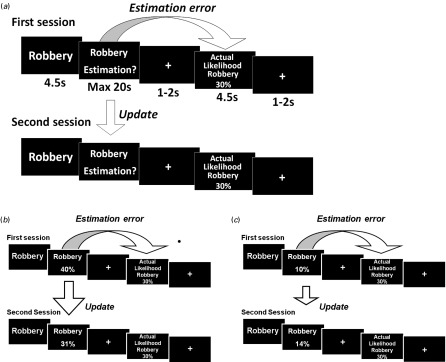Fig. 1.

Task design. (a) On each trial, participants were presented with one of 45 adverse life events and asked to estimate how likely this event was to occur to them in the next 5 years. They were then presented with the average probability of that event occurring to a person similar to themselves in the same sociocultural environment. For each event an estimation error was calculated as the difference between the participants' estimation and the average probability provided. The second session was the same as the first session. (b) For each event, an update was calculated as the difference between the participants' first and second estimations. If the participants' first estimate was higher than the average probability provided, that trial was classified as ‘desirable’ because the information presented was better than expected, calling for an adjustment in an optimistic direction. (c) If the participants' first estimate was lower than the average probability provided, that trial was classified as ‘undesirable’ because the information presented was worse than expected, calling for an adjustment in a pessimistic direction.
